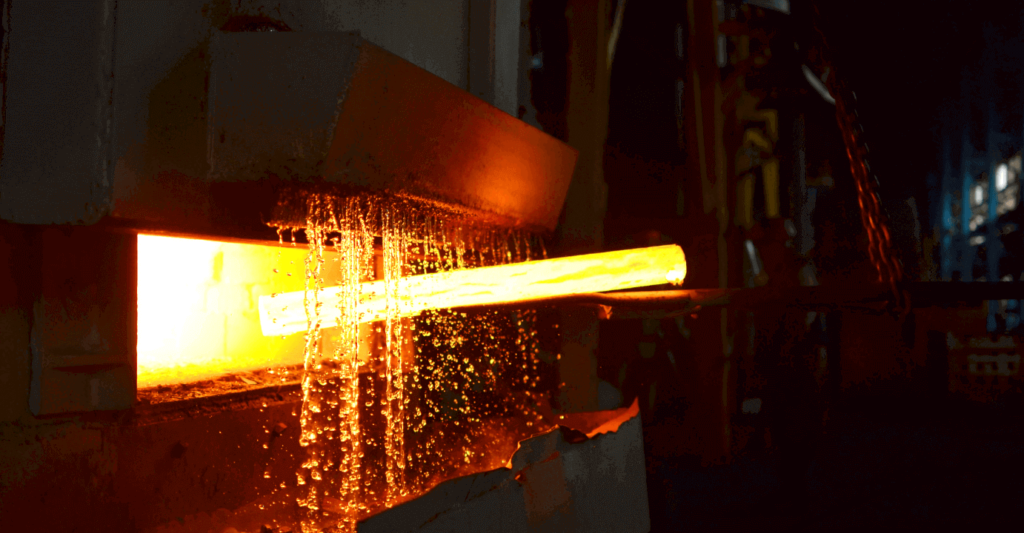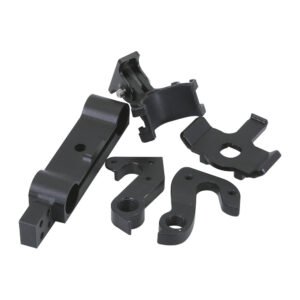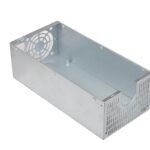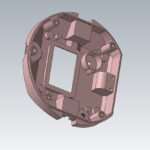Introduction
Metals require heat to get in the desired shape, become harder, and be less brittle. Since modern machining thrives on sophistication and precision, it is crucial that we heat treat the metals appropriately to help them gain a permanent set of properties. Hardness, strength, machinability, elasticity, formability, and other critical properties change when metals undergo heat treatment. When heat-treated properly, metallurgists can harness the remarkable chemical and physical properties of metals and prepare them well for machining. Let’s understand the heat treatment of metals in more detail, shall we?
What is heat treatment?
Heat treatment is a simple process in which the metal or alloy is heated to a certain temperature and cooled. The heating and cooling of the metal changes the microstructure of the metal and brings out the desired chemical and physical properties required for a project. While the very definition of heat treatment is heating and cooling of a material, we must understand that the process is conducted in a controlled manner. This is because you want the shape of the metal component to remain intact. Before discussing how heat treatment of metal or alloy works, let’s learn how the process benefits metallurgists.
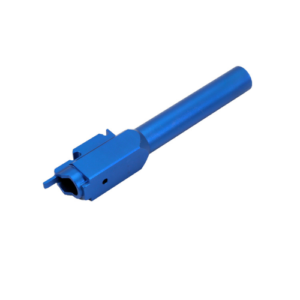
Benefits of heat treatment
Why should you heat treat metals? Here are some of the most crucial benefits of the heat treatment process. Let’s discuss them in detail.
- Boosts metal strength
Heat treatment is known to boost metal strength. However, it reduces toughness and introduces brittleness in the metal. More importantly, you should heat treat metal as it can significantly impact yield strength, tensile strength, and fracture toughness. Heat treatment generally makes the material ductile and flexible.
- Changes metal properties
Metal properties change dramatically when heat-treated in a controlled environment. You can heat treat materials to yield the required mechanical, electrical, chemical, and magnetic properties to make sure a component is compatible with other materials. The change in mechanical or physical properties plays a crucial role in machining.
- Improves brittleness
Are you working with metal that weakens or breaks when exposed to extreme working conditions or environment? Heat treatment will come to the rescue. When heat-treated, metals gain the ability to overcome environments that would otherwise make them break.
- Makes metal wear-resistant
Heat treatment will improve the wear resistance and durability of your metals. It does that by hardening the material on the surface or all the way through. Metals and alloys like steel, titanium, and other copper alloys become stronger, tougher, and more resistant to wear after heat treatment.
- Reduces material stresses
What about workability and machinability? Well, heat treatment takes care of that as well. Heat treatment helps manufacturers remove internal stresses and make the metal or alloy suitable for sheet metal fabrication,CNC machining, stamping, welding, and any kind of hot or cold work.
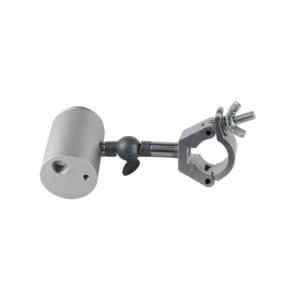
How does heat treatment work?
To help you understand heat treatment better, we have divided the process into three crucial steps. Basically, the process involves heating the metal, holding it at a certain temperature, and cooling it down. The high temperature disrupts a metal’s microstructure, which causes changes in its chemical, mechanical, and electrical properties.
Step 1: Heating
Metallurgists begin the process by heating the metal to a prescribed thermal profile. When heated, the metal or alloy will turn into a mechanical mixture, a solid solution, or a combination. Since each state brings different properties and qualities to the metal, one must heat the metal according to the associated phase diagram.
Step 2: Holding
As the term suggests, holding refers to keeping the heated metal at a specified temperature. This step is also called the soaking stage, as the metal is made to stay at the achieved temperature for a period of time. However, the soaking time depends on the metal being heat treated. You will also have to consider the material type and part size. Large materials or parts will require more soaking time.
Step 3: Cooling
Finally, you will have to cool the material once the soaking period is over. Make sure the metal is cooled in a prescribed manner. Since structural changes might occur in the cooling stage, you should conduct the process in a controlled environment. It will help make the heat treatment process more precise.

Different types of heat treatment methods in metals
Since you want to leverage different qualities of the metal through heat treatment, you can choose from a variety of heat treatment techniques. Here are some of the common heat treatment methods you should know of.
- Hardening
Hardening is the most common heat treatment process that, as the name suggests, increases the hardness of a metal. The metal is heated to a specified temperature and then cooled rapidly by putting it in a cooling medium. One can use oil or water to cool the metal. This results in the part achieving increased hardness and strength. However, the metal’s brittleness increases as well. Some of the common types of hardening processes are induction hardening, differential hardening, flame hardening, and case hardening.
- Tempering
Tempering is the heat treatment technique that helps reduce the excess hardness in the metal introduced during the hardening process. Besides that, it also relieves the internal stresses, making the metal suitable for the application. Tempering involves heating the metal at a temperature much lower than that of hardening.
- Ageing (Precipitation Hardening)
Ageing or precipitation hardening is the heat treatment method that boosts the yield strength of malleable metals. The properties of metal change as this heat treatment method produces uniformly dispersed particles within the metal’s grain structure. In this, the metal is heated to medium levels of temperature and then cooled quickly.
- Annealing
Annealing involves heating the metal beyond the upper critical temperature. Once heated, the metal is cooled slowly, which makes it suitable for cold working and forming. Annealing is the best heat treatment method to soften the metal before usage. It reduces the stresses and plastic deformations in the metal when heated beyond the upper critical temperature. Also, there are plenty of annealing techniques like recrystallization annealing, partial annealing, full annealing, final annealing, and more.
- Normalizing
Normalizing is a heat treatment method that helps relieve internal stresses in the metal caused due to welding, casting, quenching, and similar processes. It involves heating the metal to a temperature of 40°C above the upper critical temperature. As the name suggests, normalizing involves cooling the metal in the air after holding it at the temperature for a designated period of time. Normalizing helps make the metal stronger and tougher.
- Carburisation
Carburisation is a unique heat treatment method as it involves heating the metal in the presence of another material. The material, however, should be able to release carbon on decomposition. The metal surface absorbs the carbon, which makes it harder than the inner core!
- Stress relieving
Stress-relieving is another heat treatment method that helps eliminate the stresses introduced by processes like forming, rolling, straightening, machining, and more. It is a common heat treatment technique for boiler parts, accumulators, air bottles, etc. In this, the metal is heated to just below its lower critical temperature. The metal is then cooled slowly.
Best metals for heat treatment
So, which are the best metals for heat treatment? Finding suitable metals for heat treatment isn’t challenging. While most ferrous metals are suitable for heat treatment, you can also heat-treat alloys of magnesium, aluminium, nickel, copper, brass, and titanium. The heat treatment techniques shared above are generally applied to ferrous metals. However, annealing, ageing, and quenching are suitable for metal alloys. Aluminium, one of the most used metals around the globe, is heat-treated using methods like annealing, solution heat treating, and ageing. To be frank, not all heat treatment methods are beneficial for all materials. Therefore, we recommend you study the metal’s behavior under different conditions before selecting a heat treatment method.
FAQs
What is heat treatment?
Heat treatment is a group of industrial, thermal and metalworking processes used to alter the physical, and sometimes chemical, properties of a material. The most common application is metallurgical.
What are the major the majority of heat treated materials?
alloys of copper, magnesium, aluminium, nickel, brass, and titanium can be heat treated. About 80% of heat treated metals are different grades of steel.

